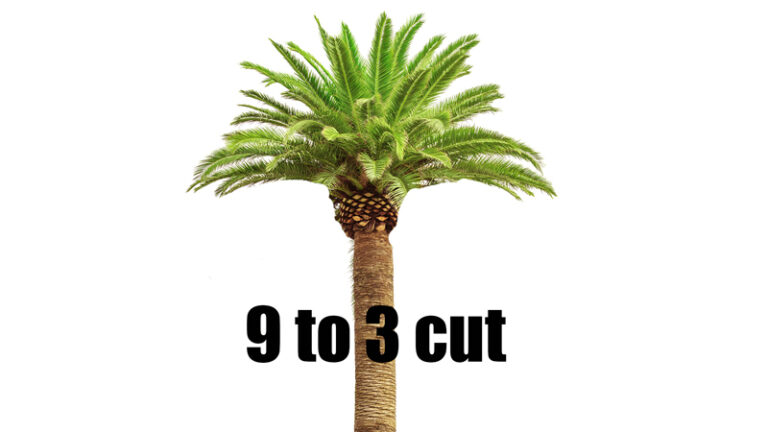Palm trees are tropical and subtropical plants that often evoke images of beaches, calmness, and relaxation. Their tall, elegant features help define the landscape. Whether planted in clusters or standing alone as a focal point, palms can greatly improve the aesthetics of a property. Pruning is essential to maintain the health and vitality of palm trees, which aids in their longevity and beauty. It is also an important factor in preventing potential hazards and damage.

Image: www.howtowithdoc.com
Palm trees generally require more frequent pruning than other trees. The ideal frequency of trimming can vary depending on the species, location, and environmental factors such as wind and exposure to sunlight. The amount of trimming should also consider the purpose of the palm, whether for ornamental or fruit-bearing purposes. While some people prefer a more natural look with minimal trimming, others may prefer a tidier, manicured appearance.
Determining the Amount of Trimming
The amount of trimming required for a palm tree depends on various factors:
Tree Growth Rate and Condition
Fast-growing palms, such as queen palms and foxtail palms, may require more frequent trimming to maintain their shape and size. Palms that are in poor health or have suffered storm damage may also need more extensive trimming to remove dead or damaged fronds and promote new growth.
Species and Type
Different palm species have varying growth patterns and pruning requirements. Some palms, like the windmill palm, can tolerate more aggressive trimming, while others, such as the majesty palm, require a more conservative approach. Understanding the specific nature of the palm species you have will guide the appropriate trimming technique.

Image: thelocaltreeexpert.com
Location and Growth Environment
Palm trees grown in windy areas may require more frequent trimming to remove damaged or loose fronds that could pose a safety hazard. Palms planted in close proximity to buildings or power lines may also require more trimming to prevent fronds from interfering with structures or infrastructure.
Purpose of the Palm
The purpose of the palm tree can influence the amount of trimming required. Palms grown for ornamental purposes may require more frequent trimming to maintain a desired shape and size. In contrast, palms grown for fruit production may benefit from less frequent trimming to maximize fruit yield.
General Guidelines for Trimming
As a general rule of thumb, it is recommended to remove no more than one-third of the total number of fronds from a palm tree at any given time. This guideline helps maintain the palm’s overall health and appearance while promoting new growth.
For most palm species, it is advisable to remove only the brown, dead, or damaged fronds. These fronds can harbor pests and diseases and are not contributing to the health of the palm.
It is critical not to over-trim palm trees, as this can lead to an unhealthy and unsightly appearance. Over-trimming can also weaken the palm and increase its susceptibility to pests, diseases, and environmental stressors.
How Much To Trim A Palm Tree
Hiring a Professional
If you are not comfortable trimming palm trees yourself, it is highly recommended to hire a qualified arborist. Arborists have the knowledge, experience, and equipment to safely and effectively trim palm trees. They can also assess the overall health of the tree and provide recommendations for proper care and maintenance.
While palm trees are generally low-maintenance plants, proper trimming is essential to maintain their health, beauty, and structural integrity. By understanding the factors that determine the amount of trimming required and following general guidelines, you can ensure that your palm trees thrive and continue to enhance your landscape for years to come.